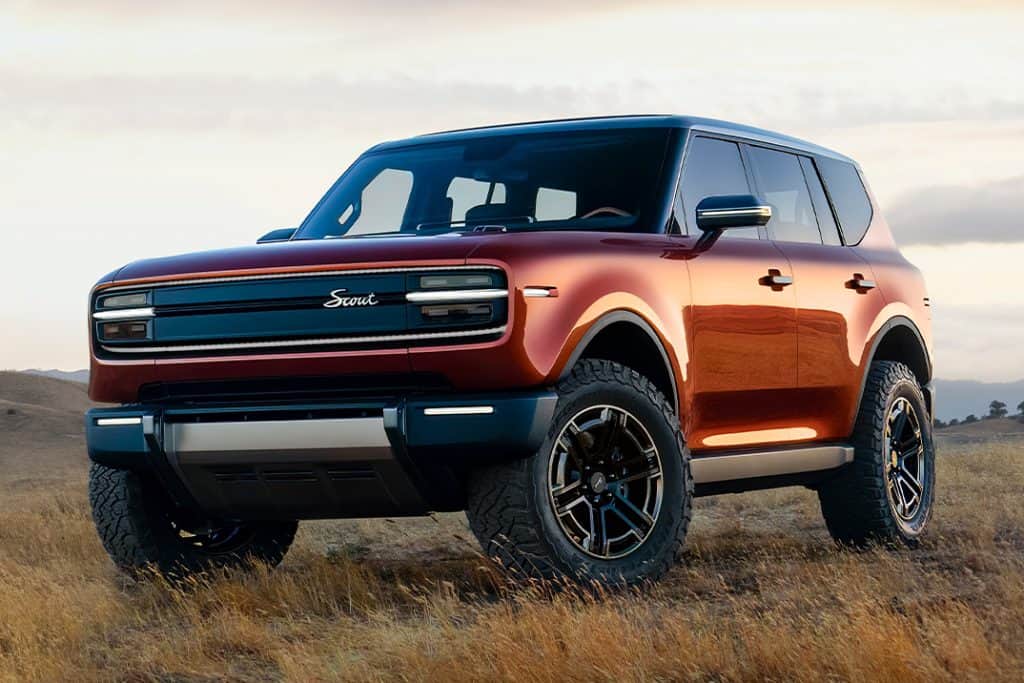
From its first impression, the Traveler evokes the blocky silhouette of the original International Harvester Scout of the 1960s and ’70s, sporting upright body lines, a short front and rear overhang, and a prominent split tailgate. A crease across the grille, lifted rear-side windows, and a rear-mounted spare tire nod to the SUV’s classic DNA, while modern proportions and detailing ground it firmly in the 21st century. The vehicle has drawn comparisons to the Ford Bronco and Rivian R1S, though its distinct proportions and stance set it apart in the fast-growing electric SUV segment.
Under the skin, the Traveler promises serious capability. It rides on a body-on-frame chassis and boasts one foot of ground clearance, optional 35-inch tires, a solid rear axle, front and rear mechanical lockers, sway-bar disconnect, and the ability to ford up to three feet of water. The electric drivetrain delivers approximately 1,000 lb-ft of torque and can launch the SUV from 0 to 60 mph in just 3.5 seconds. The pure-electric version aims for 350 miles of range, while an innovative “Harvester” variant includes a gasoline-powered range extender capable of pushing range past 500 miles. The 800-volt architecture enables ultra-fast DC charging at rates up to 350 kW via a North American Charging Standard (NACS) port.
Inside, Scout leans into analog tactility. The dashboard incorporates physical knobs, mechanical door handles, and even optional front bench seating, all wrapped in durable materials chosen for longevity and hard use. Yet the cabin doesn’t shy from technology—digital gauge ribbons, over-the-air updates, satellite connectivity, and the new Community UX™ system add layers of convenience and connectivity to the otherwise utilitarian space.
Unlike legacy automakers, Scout Motors is pursuing a direct-to-consumer model, bypassing dealerships in favor of dedicated Scout Studios and online sales. A new $2 billion plant in South Carolina is on track to begin production in late 2027. Pricing is expected to start below $60,000, making the Traveler a relatively accessible choice in the upscale off-road EV category.
Recent images show an Off-Road Concept version clad in green with 18-inch wheels, rock sliders, a winch bumper, bull bar, and roof rack, hinting at the modularity and customization that could appeal to overlanding enthusiasts. The Traveler is not just a nostalgic homage—it’s a statement of intent. By reviving a beloved American name with purpose-built electric utility, Scout is positioning itself as a counterpoint to screen-heavy, design-forward EVs. In doing so, it’s creating a “connection machine,” where physical engagement and mechanical confidence are at the center of the experience.
Underneath, the Traveler opts for proven, off-road-enhancing features:
-
Body-on-frame chassis with solid rear axle
-
Mechanical lockers front and rear, solid sway-bar disconnect
-
Terrain capability: one foot of ground clearance, up to 35-inch tires, 3-foot water fording
-
Utility-first amenities: frunk with 120 V/USB‑C outlets, optional roof-rack, Cabana retractable roof, swing-out tailgate carrier
As the vehicle moves from concept to production, Scout Motors appears determined to claim a lasting stake in the American electric adventure vehicle market—one built on heritage, performance, and a no-nonsense approach to what it means to go off-road.